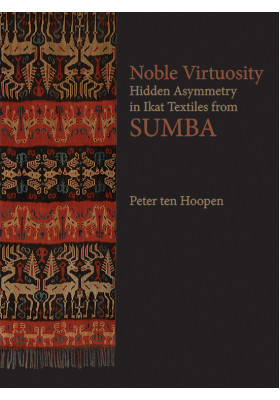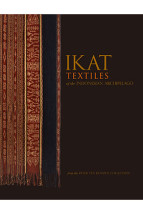Noble Virtuosity
Hidden Asymmetry in Ikat Textiles from Sumba
ISBN : 978-988-74708-4-7
Distributed for HKU Museum and Art Gallery 香港大學美術博物館
November 2024
256 pages, 9.25″ x 12.2″, 230 full-colour images
Not for sale in Indonesia
- HK$500.00
Also Available on
In this new study, Peter ten Hoopen reveals levels of virtuosity in the work of Sumbanese textile artists that remained overlooked for over a century of Indonesian textile research. Their richly decorated men’s wraps, hinggi, have commonly been described as symmetric along both axes. But as ten Hoopen’s investigation at Leiden University uncovered, this supposed canon only survived because crucial design elements were overlooked. Sumba’s noble weavers managed to create asymmetry by hiding tiny visual elements that disrupted symmetry and were made to be overlooked. They exploited insights in the way we process visual information by simulating regularity, while deceitfully tying in elements that break it. Ironically, they were so good at hiding these design elements that they remained unnoticed for generations. This virtuosity was a product of Sumba’s competitive culture, suffused by an ancient headhunting ethos and marked by secrecy. As the artists strove to outsmart each other, naturally they guarded their repertoire of tricks. The secrecy also increased the social distance between nobility, commoners and slaves, reinforcing Sumba’s feudal societal structure. Only high-caste initiates would even begin to look for hidden devices. Ten Hoopen himself also overlooked them for decades until his eyes were opened and he began hunting for them actively. His findings reveal not just the Sumbanese dyers’ virtuosity, but also their playfulness and the element of ‘flow’ that inspired their work. This ode to the Sumbanese weavers’ ingenuity aims to create a new global class of initiates and to inspire even greater admiration for their art.



